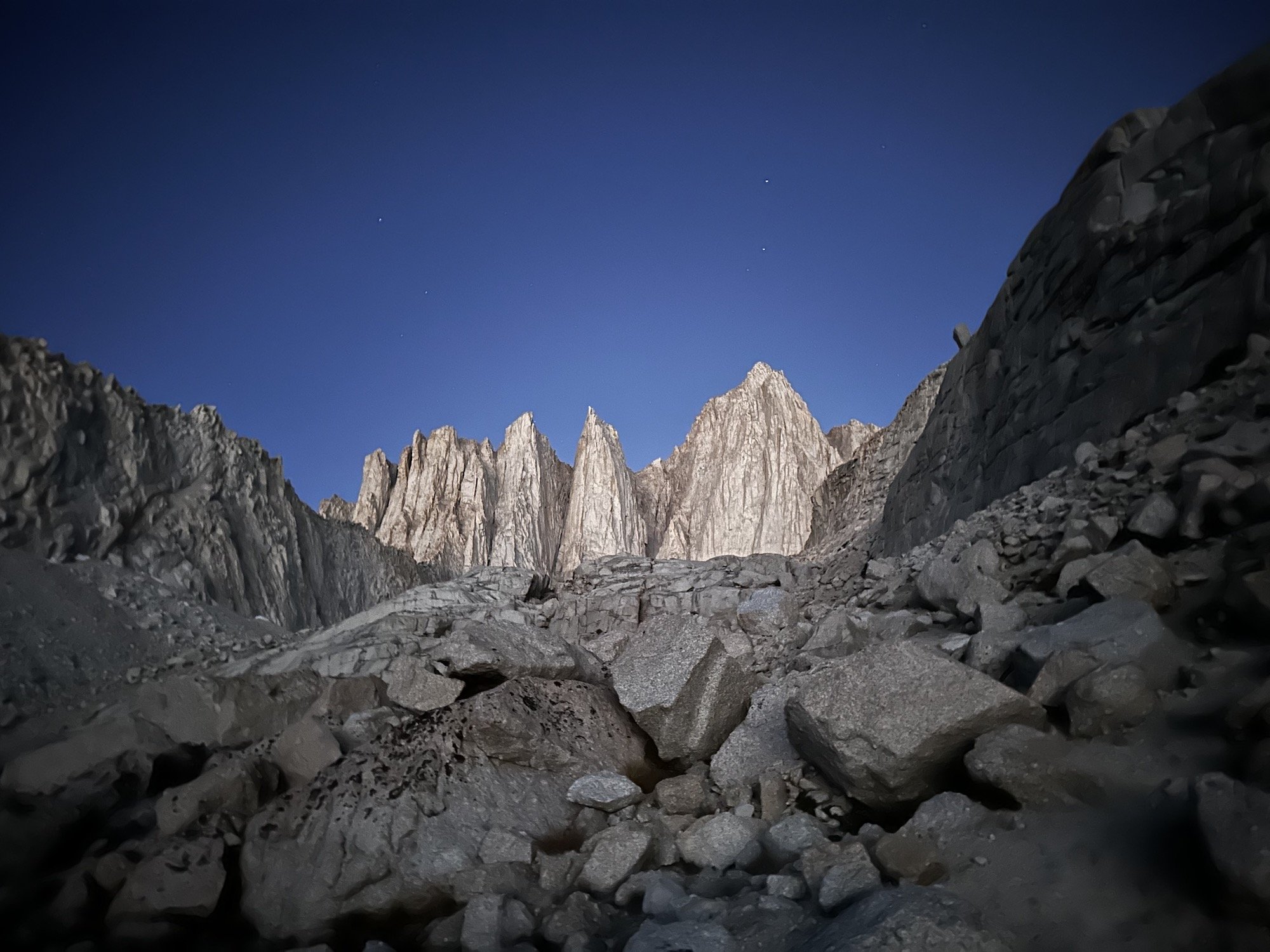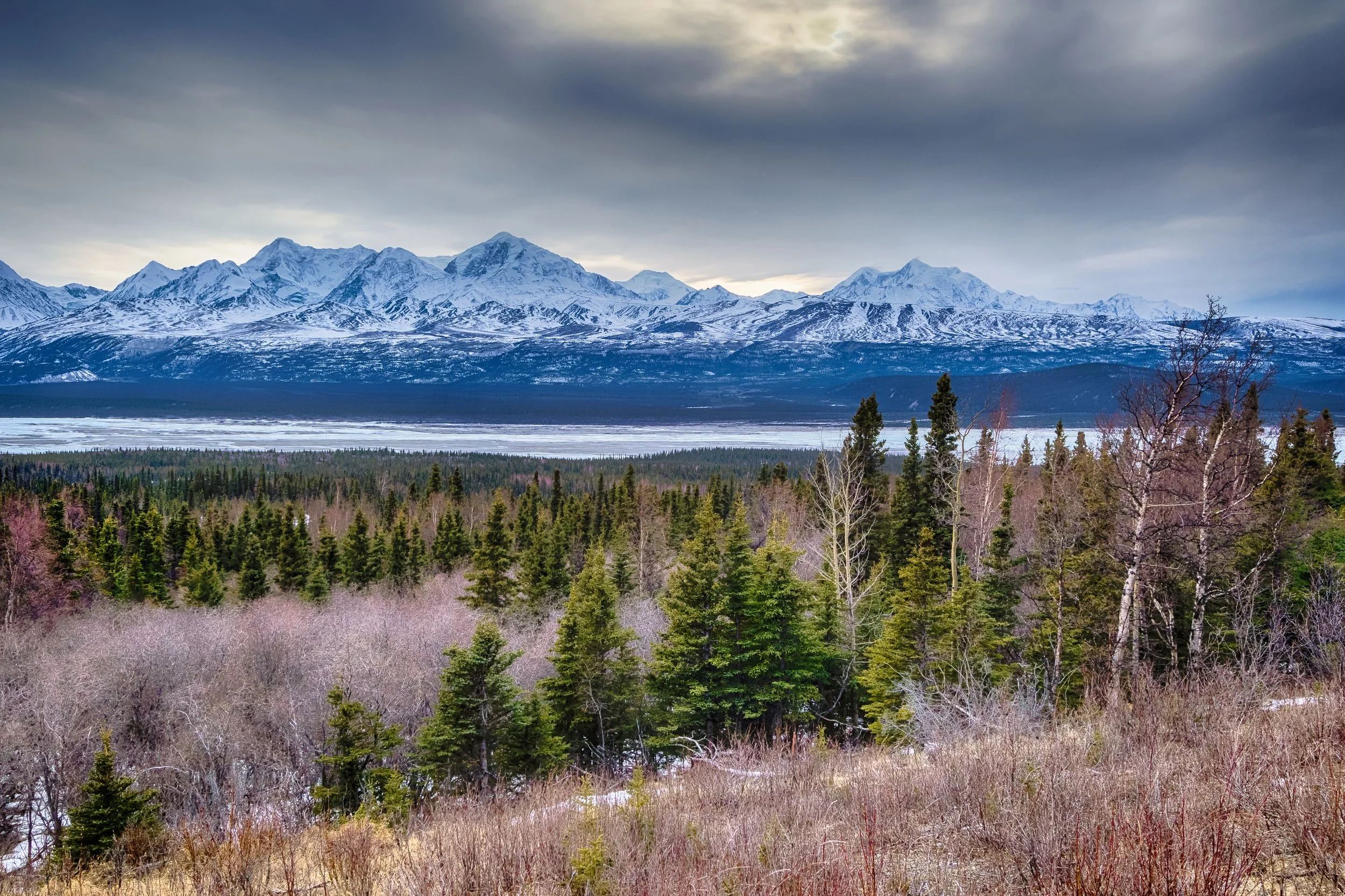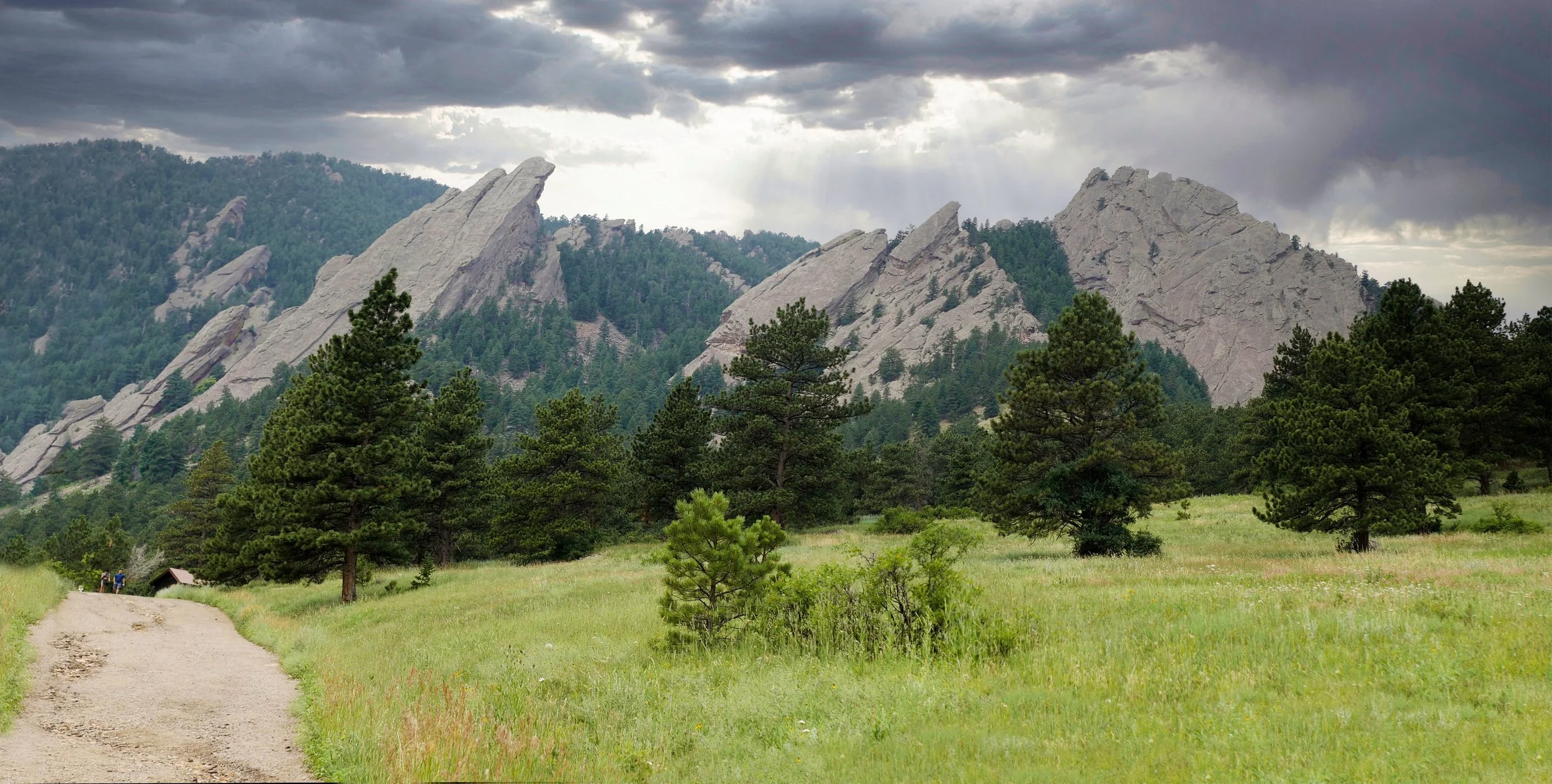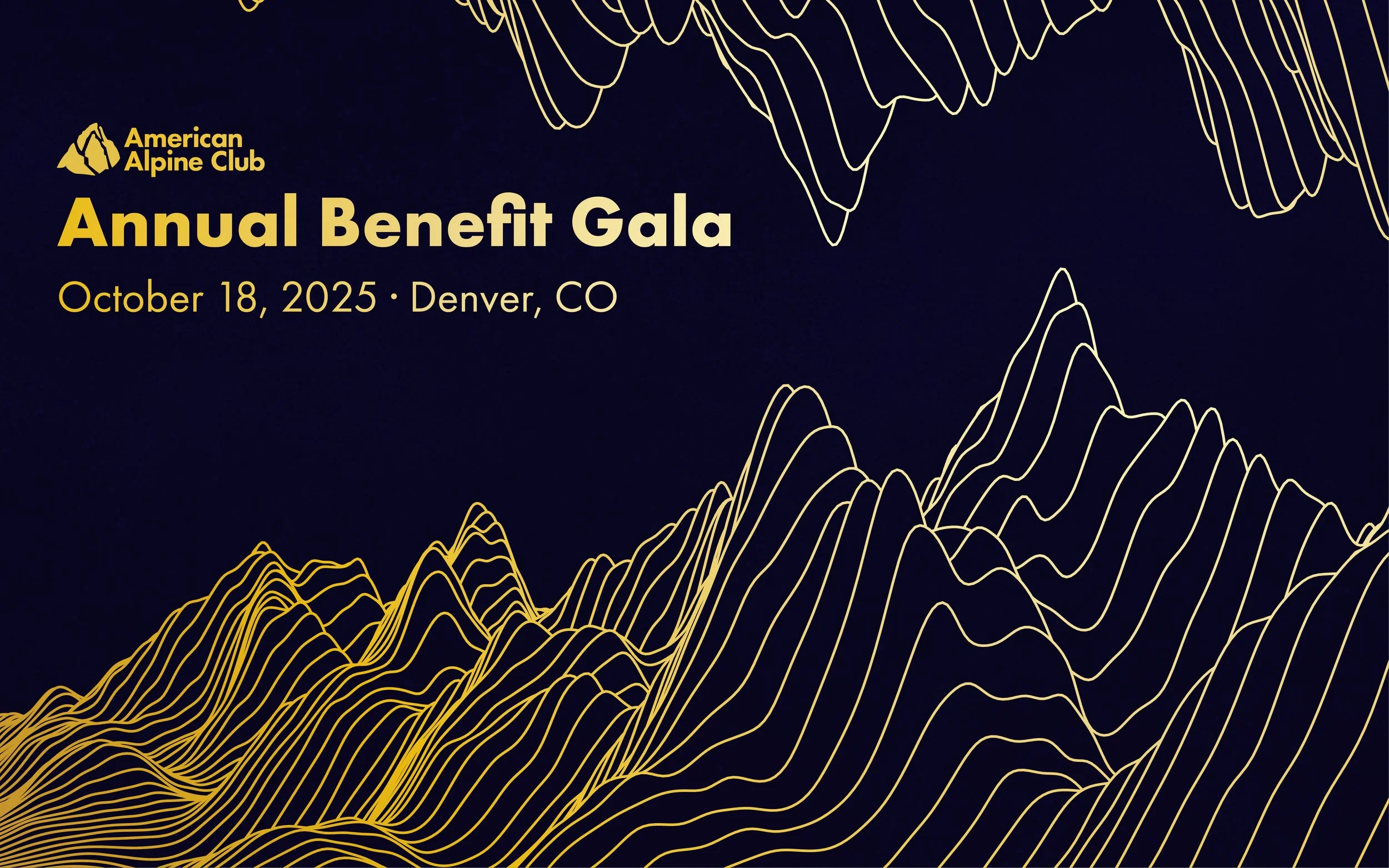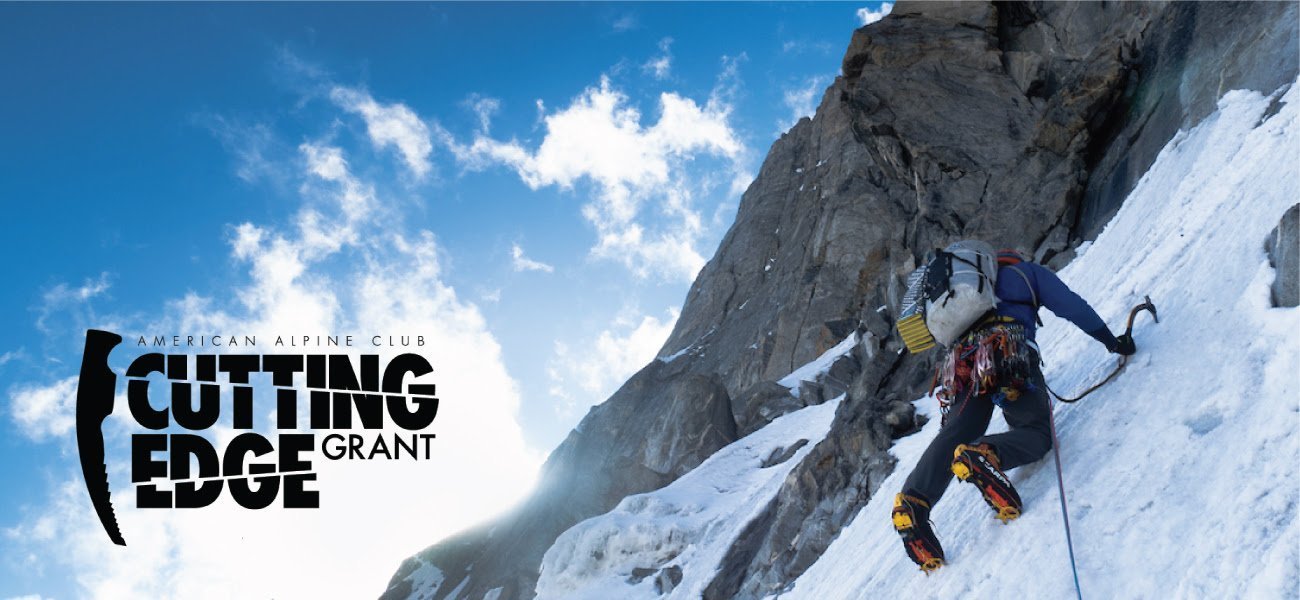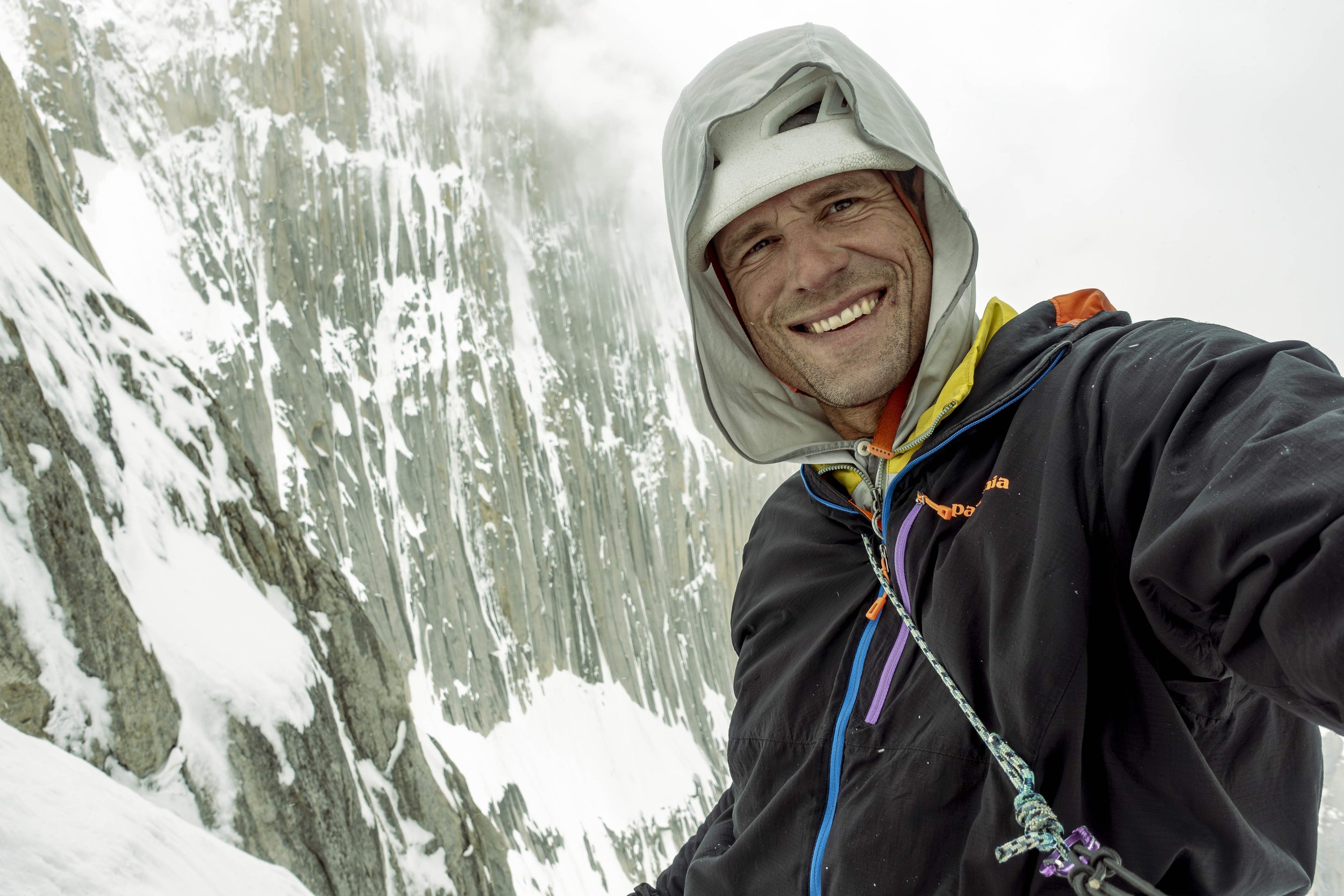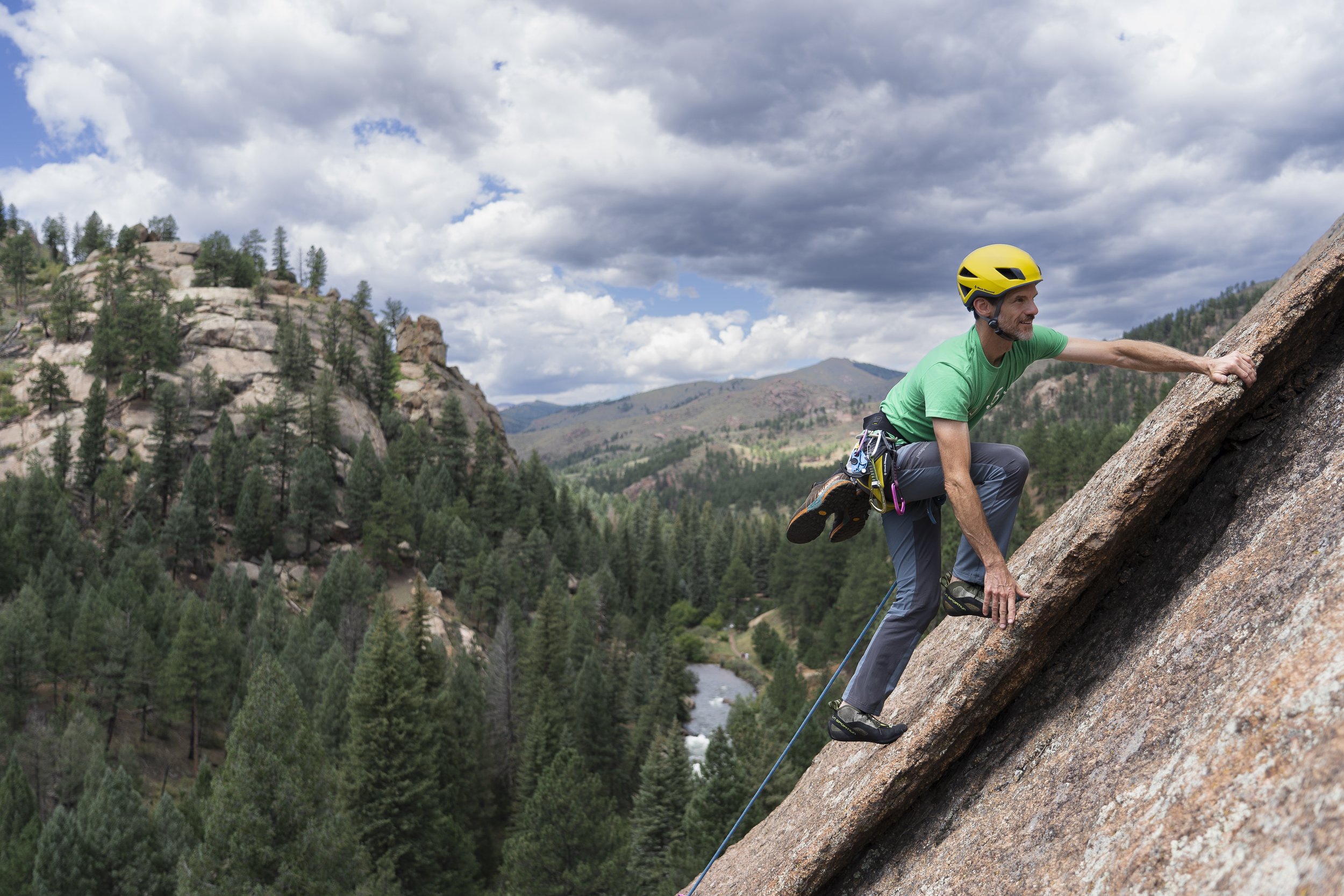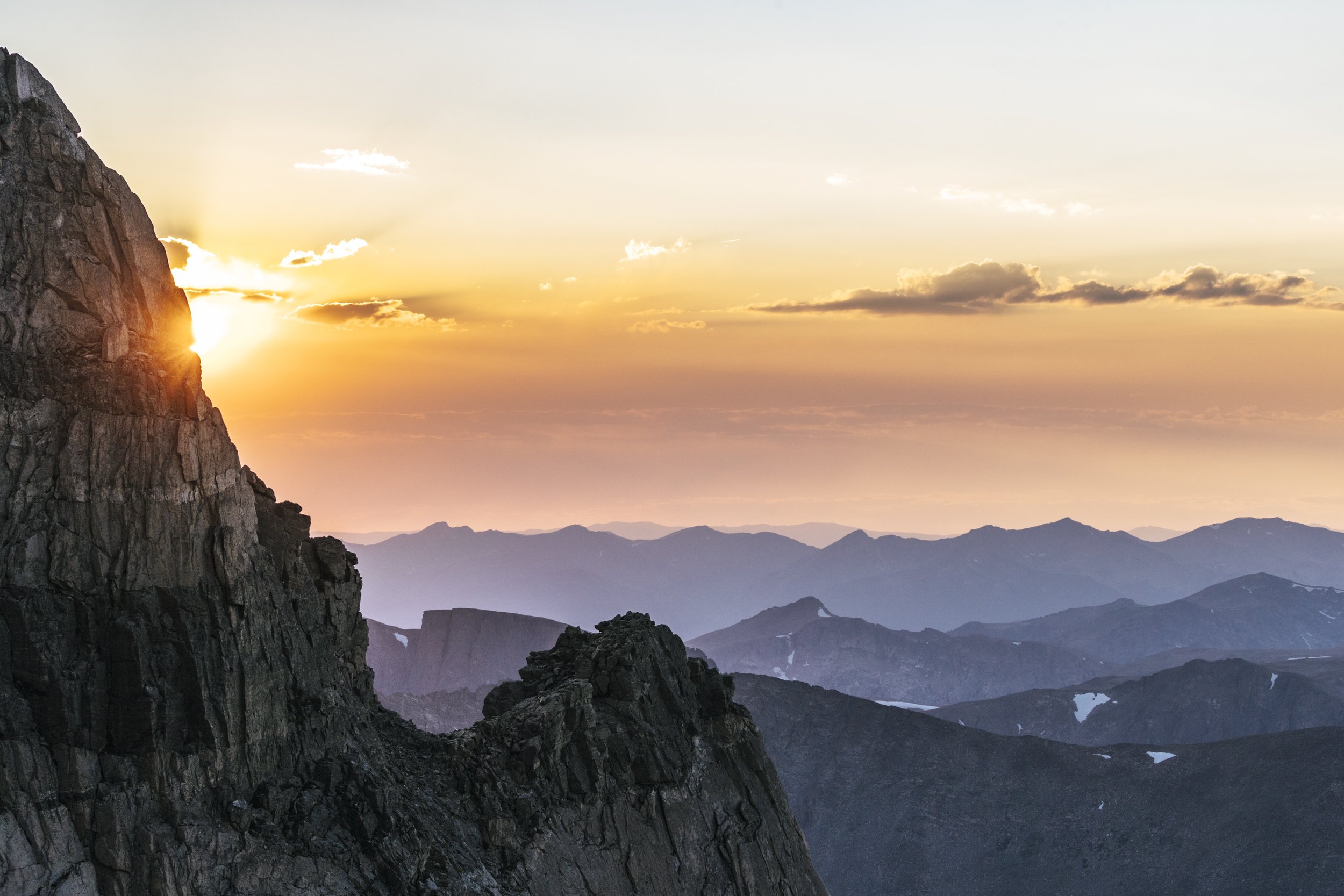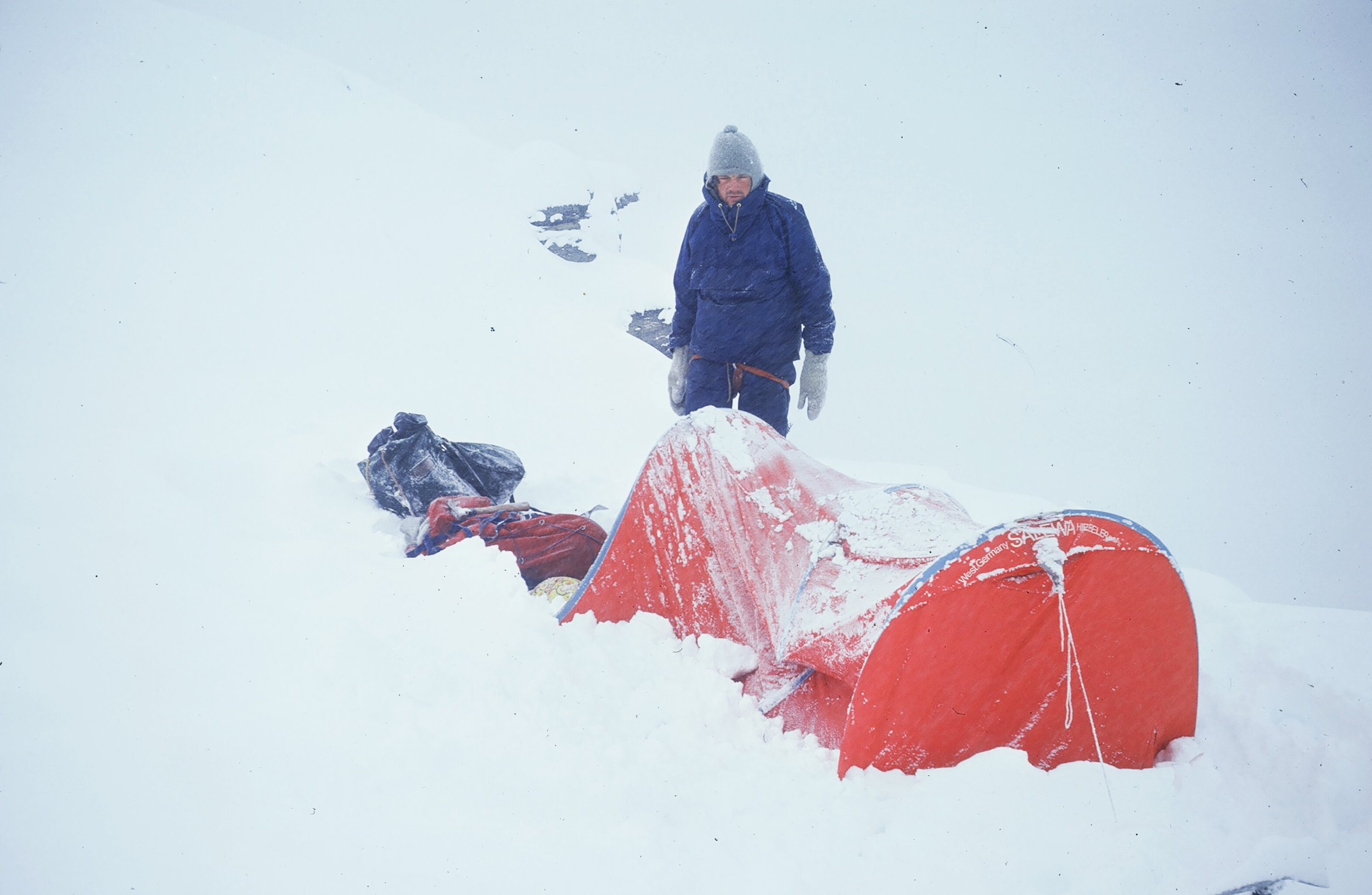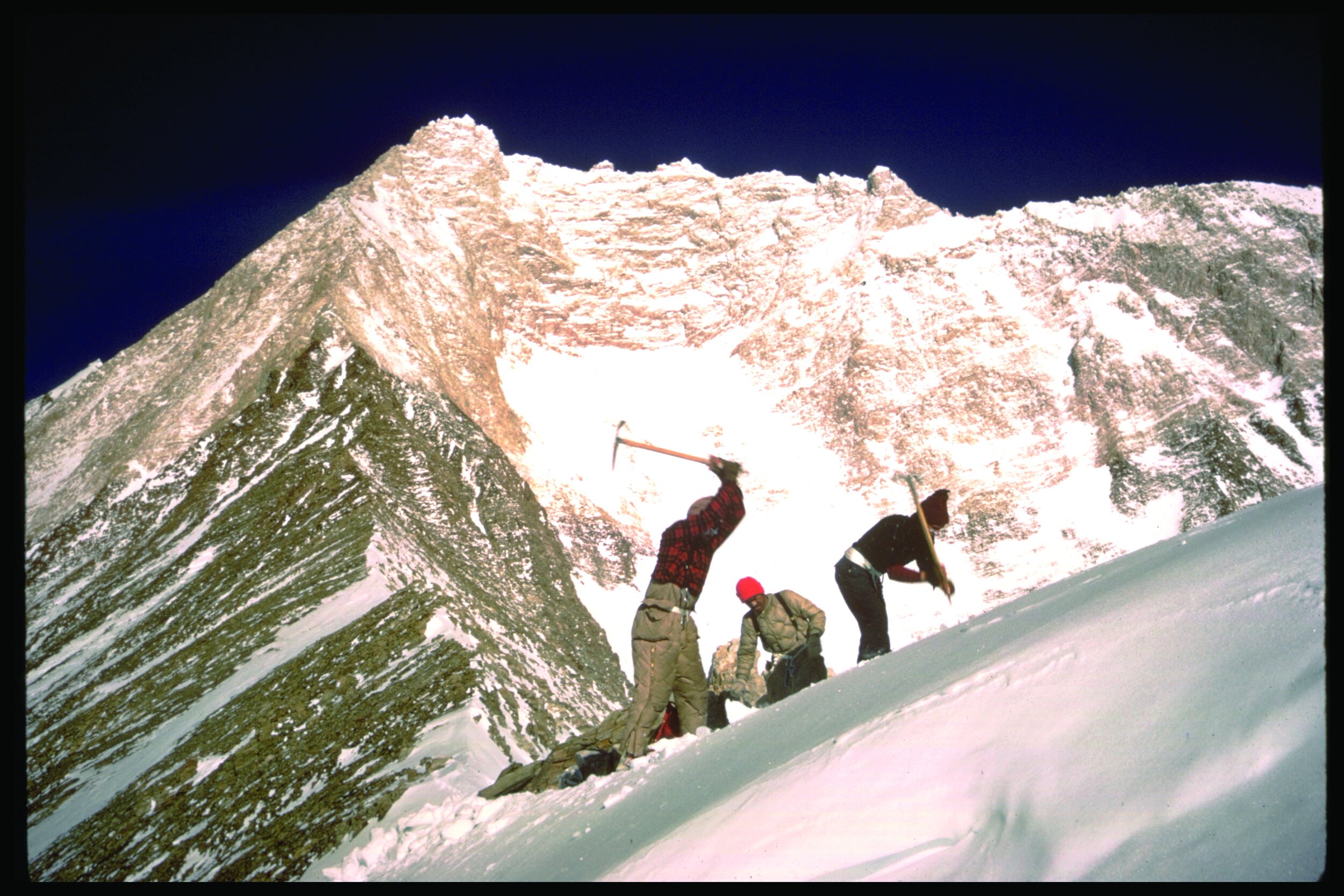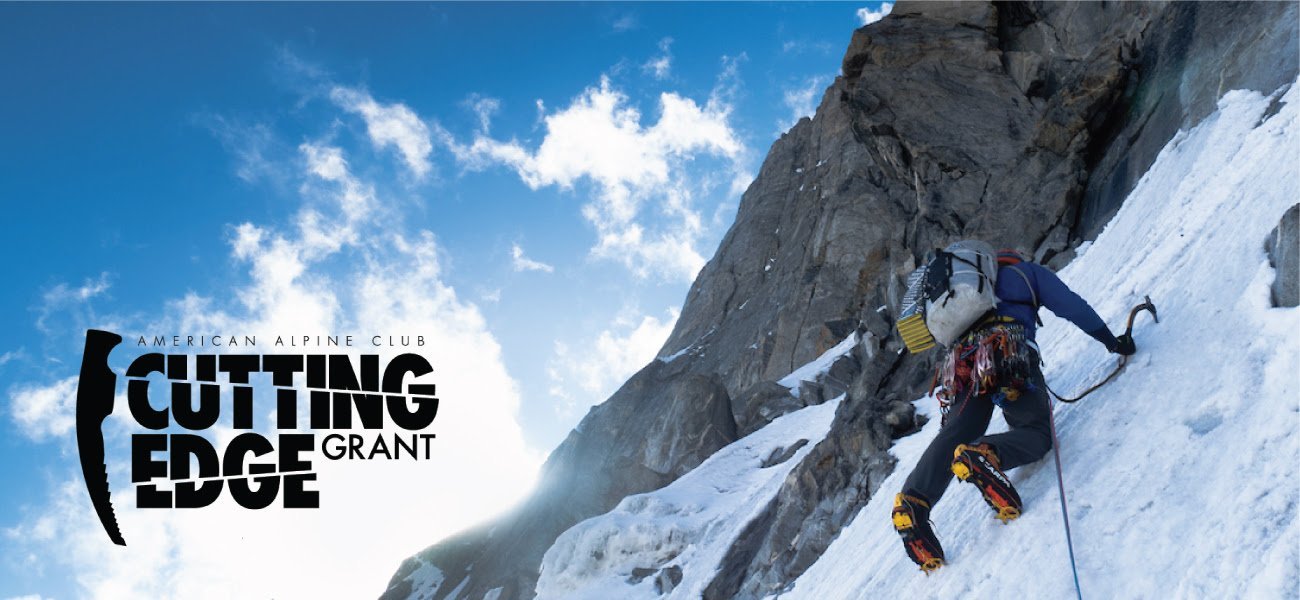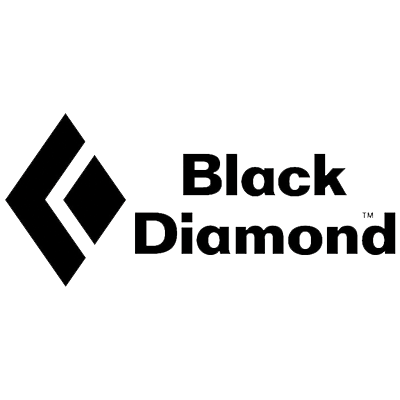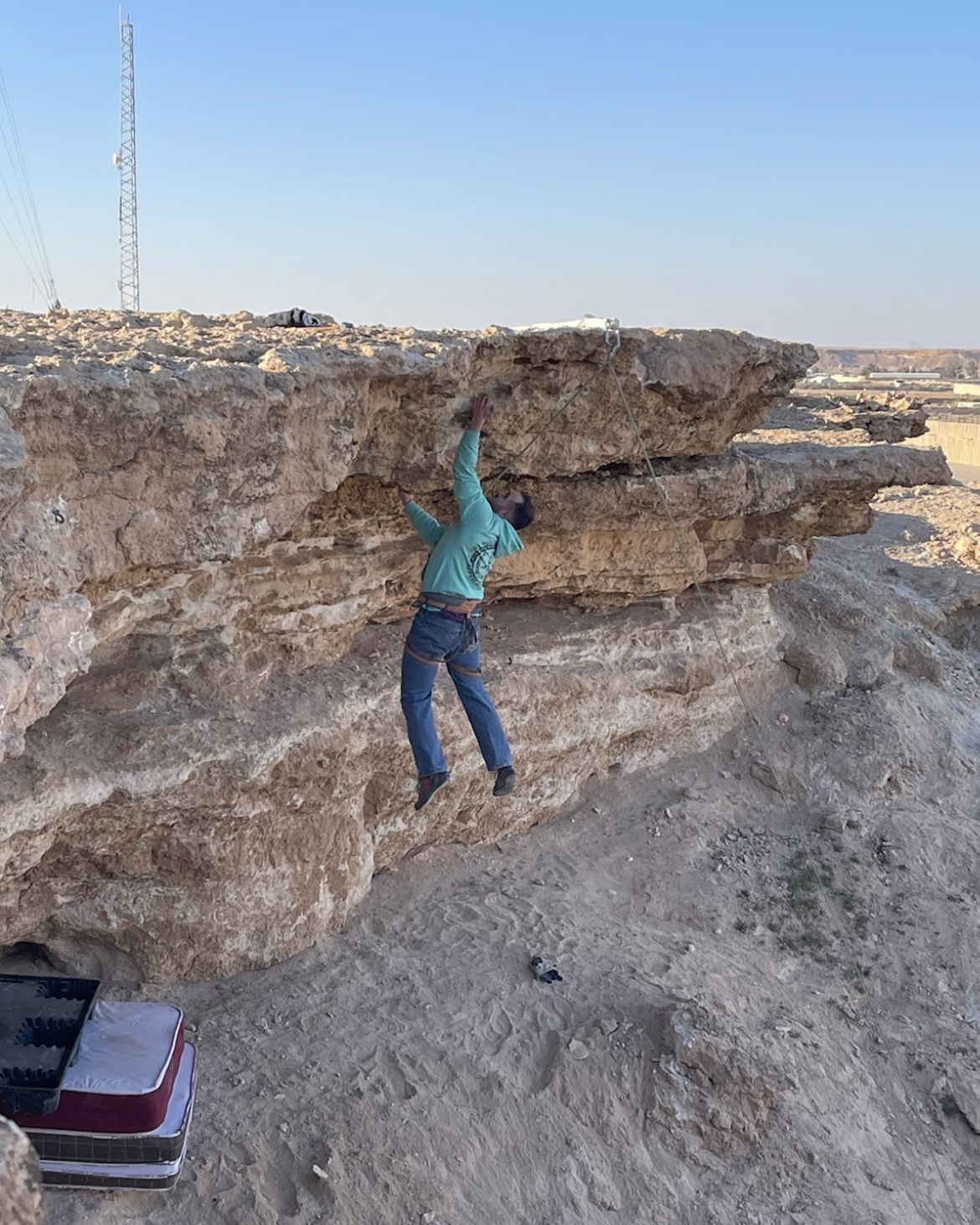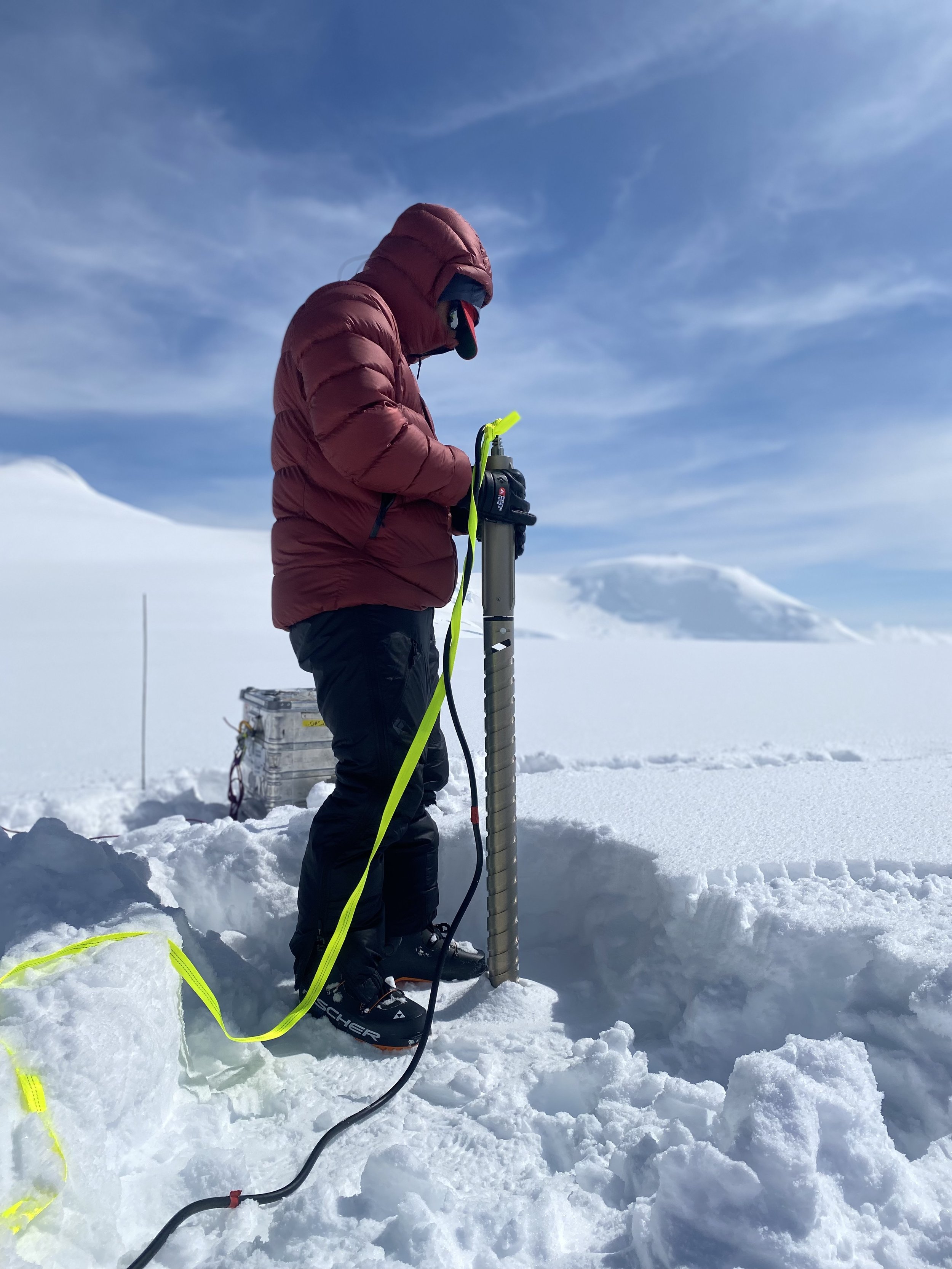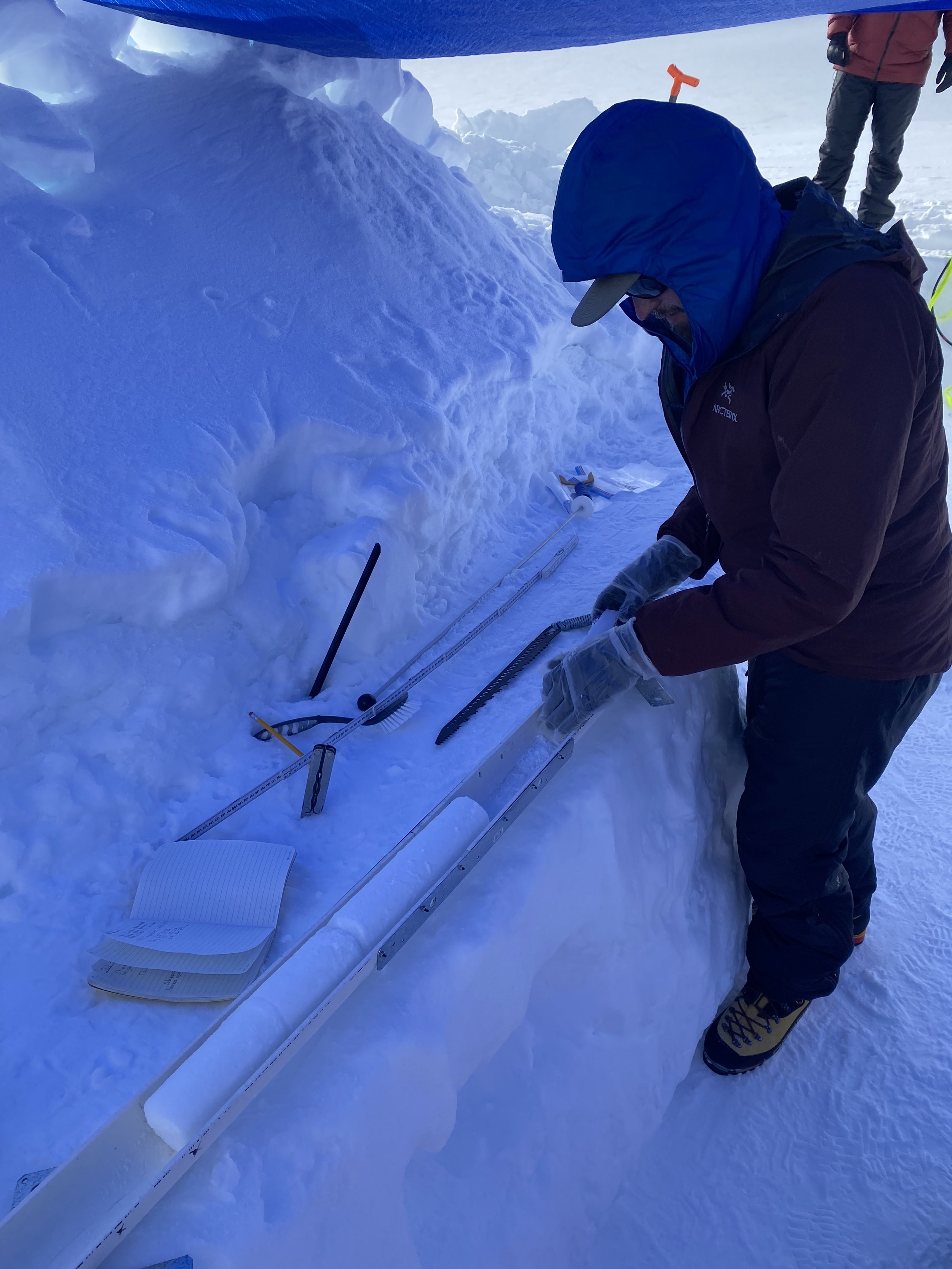Photo by Charles Denton.
Ascending the Path
A Story from the Live Your Dream Grant
By Charles Denton
Photos by Charles Denton on land of the Yokuts people
We stared out at the treacherous somber surfaces, weathered by wind and storm. The mountains transformed in our minds, revealing an expanse impossible to comprehend. It is upon this sea of summits we desired to stand.
I was born in flatland central Wisconsin, and often biked with my childhood friend Devin Grdinic up the 1.56-billion-year-old, 1,924-foot prominent hill, Rib Mountain, located in our hometown. From the gouged rim of the hundred-foot quartzite quarry, we grew an affinity for mountains, dreaming of summits.
In our early 20s, ambitious and hell-bent, we drove from Minneapolis to Mt. Elbert in a day. Devin did the planning, and I went along. Knowing the importance of acclimatizing but lacking the time, we spent a night in the Never Summer Mountains. With a pound of venison strapped to my chest to prevent the blood from leaking in my bag, we set forth to high camp and shivered through the cold night. In the morning my appreciation of the mountains solidified as I opened the tent to the majestic view.
Over a cup of coffee at a wayside diner a few years later, Devin proposed another scheme—to tag Mt. Whitney, the tallest in the lower 48. Without hesitation, I said yes.
Photo by Charles Denton.
We descended into the smog of LAX and drove north to the Sierra Nevada. Finding residence in Mammoth Lakes, we improved our acclimatization period by visiting the ancient bristlecones of the White Mountains of California.
Parking late in the afternoon on October 7, 2008, we hit the Mt. Whitney Trail with heavy packs. Unbeknownst to us, our map remained in the back seat. We missed the creek crossing at Lower Boy Scout Lake and went off-trail, bushwhacking into the night. Panicked, we trudged over bush and boulders, reaching an icy ledge where my foot slipped and I hung by loosely fitted gloves. Devin instinctively reached with his hiking pole and hoisted me back up. Clearly, my intrepid aspirations were on a slippery slope.
Miraculously finding Upper Boy Scout camp in the dark, we shivered through the night with inadequate sleeping pads as winds battered our tent. In the warmth of the morning, we set off to climb the wrong mountain. Returning to camp, we planned one final attempt before we’d miss our flights. With little sleep, we set off before dawn, reaching Iceberg Lake as Whitney’s east face prominently glowed orange. At the base of the snow-filled Mountaineer’s Route gully, we realized we were a bit over our heads. With blistered feet and tired shoulders, we descended.
Over the next seven years, Devin and I summited Mt. Temple, Mt. Shasta, Mt. Baker, and Mt. Rainier together. In the years between doing Shasta and Baker, I was introduced to technical rock climbing by my close friend Ross Nueske, a serious square-jawed man who wore a mischievous plotting grin. Ross and I enjoyed climbing multi-pitch trad routes, but after a decade of rock climbing, something still felt unfinished. The memory of Whitney taunted me to return.
I purchased an entry permit for the summer of 2020.
While climbing at the North Shore of Minnesota that June, I received a message from Devin. He had been diagnosed with life-threatening leukemia. Complete devastation washed over everyone close to him. I recall sitting by Lake Superior, staring into the empty blue horizon, trying to process the news as waves lapped sorrowfully over the pebbled shore. Dreams of the future in jeopardy, one small dream being Whitney, the gravely worse one—losing my best friend. Life lingered in a fragile balance as we stayed in contact over Devin’s year-long struggle. Through multiple series of treatments that brought him to the brink of death, he ultimately survived, thanks to a miraculous bone-marrow transplant.
In 2023, I purchased another North Fork of Lone Pine entry pass. The new plan was for Ross and me to climb the East Buttress (1,000', 11 pitches, 5.7) on Mt.Whitney. Devin invited his older brother Marcel Grdinic, a chemistry teacher from Chicago, to join him in attempting the third-class Mountaineer's Route. Two months before the trip, I ruptured my right distal biceps tendon while bouldering. Orthopedic surgery was needed, followed by six months of nonuse: no climbing, no lifting, and the struggle to use my left hand for everything.
The trip still went on, albeit with a hiking-only itinerary. Clouds Rest, a famed trail in Yosemite National Park, gave everyone a magnificent view of the Valley.
During my residency of healing, my aspiration for Whitney magnified, growing more prominent in my mind. I applied for the 2024 American Alpine Club Live Your Dream Grant, seeking to achieve this dream. Awarded the grant one year later, Ross and I flew from St. Paul to Reno and met Devin at Lake Tahoe. I held my breath in anticipation for the next complication, as we attempted to complete this chapter in our lives.
Photo by Charles Denton.
Three days were spent acclimatizing above 6,000 feet. Ross and I climbed at Lover’s Leap, completing: Surrealistic Pillar (270', 3 pitches, 5.7), Corrugation Corner (300', 3 pitches, 5.7), and Bear’s Reach (400', 3 pitches, 5.7).
The following day we bouldered a little in the Middle Bliss area. Marcel flew in from Chicago, and the next morning our assembly of four overloaded a rental car, making the rearview mirror pointless, and drove to Mammoth Lakes.
Early Wednesday, we drove to the Lone Pine ranger station, checked in, and completed our packing list with WAG bags. Nothing stood in our way. A phenomenal three-day weather window was ahead.
Hitting the trail at 11:25 a.m. with abnormally warm temps, Ross and I split the gear. We were equipped with a single rack of Black Diamond 0.2–#3 cams, two sets of nuts, a set of tri-cams, a dozen 90cm alpine draws, six 120cm slings, and a 60m rope.
A few hours uphill and navigating the class 3 Ebersbacher Ledges, we took lunch at Lower Boy Scout Lake. Devin and I laughed, reflecting upon our youthful selves, noting exactly where we went astray many years ago. It felt like I was an echo of my past self. Memories of those moments bounced back off the walls around us.
At 4 p.m., we passed the treeline and headed up slabs toward Upper Boy Scout Lake. A mirrorlike lake sat cupped in a vast bowl of mountains, reflecting the blue skies and gray peaks. Fish prodded the calm surface, wrinkling the perfect image.
Photo by Charles Denton.
We filtered water from the lake, made camp before dark, and relaxed into our tents. Night temps felt irregularly high in the lower 40s. Devin slept under the stars while Ross and I, sharing a tent, kept the doors open, allowing a soft breeze inside.
I woke at 4:30 a.m. with little sleep, partially due to Ross’s crinkling sleeping pad, and attempted to wake Devin and Marcel. They gave us an auditory acknowledgment and would be following an hour behind. With headlamps we navigated the remaining 1,000 feet to Iceberg Lake, forever burned into my mind from the first trip. We walked with the rising sun casting fire-orange across Mt. Whitney’s east face, illuminating our route.
An hour behind schedule, Ross and I scrambled the third-class slog from Iceberg to the base of the route. After roping up, I took the odd pitches, and together we navigated the buttress as the landscape below sank farther away. Massive boulders and the lake below became small reference specks lost in the vast gray landscape.
I started the third pitch, a crystalline slab that wouldn’t take much gear, past a smashed old piton and over a few traversing ridges to a cold shaded belay spot. The next couple of pitches took nearly the entirety of the 60m rope, sparing three to five feet. Climbing the ridgeline and passing the massive Peewee rock formation revealed epic views on both sides as the exposure dropped further away. I saw two specks of color ascending the Mountaineer’s Route gully. With my LYD Grant–funded Rocky Talkies, I radioed to Devin and Marcel to check in. They were a third of the way up.
The thin air above 13,000 feet caused us to slow down, stopping to catch our breath even though the climbing was easy and enjoyable. Devin and Marcel reached the summit by 2 p.m. With a celebratory shout, Devin looked over the edge and waved to us three pitches below. Ross took the last push, trying to link pitches as we simul-climbed the meandering bit, but rope drag became strenuous over the puzzle-like terrain. He built an anchor and brought me to the last 5.8 hand-crack roof move. The last few pitches of the East Buttress can range from fourth class, if you go left, to 5.6–5.10, depending on the chosen direction.
We crested the ridge with fist bumps and smiles. After years of chasing the elusive aspiration, my heart filled with satisfaction, achieving what was started so long ago, with so many U-turns along the way. Standing in that sea of peaks, I attempted to memorize the brief moment I had and everything that led up to it.
Get Access to AAC Grants
AAC members are first and foremost connected through our passion for climbing. The AAC’s grants program awarded over $200k in 2023 and is designed to support all members in their climbing pursuits—whether they’re gunning for cutting edge first ascents or everyday climbers seeking out an adventure on their own terms. We also fund research grants, supporting scientific research expeditions that contribute valuable information to our understanding of the world’s mountain ecosystems.
Though Devin and I didn’t stand at 14,505 feet at the same moment, as he and Marcel had already started to descend, we each stood on the summit knowing what it took to be there, and that we accomplished the journey together. For all of us, it was a meaningful experience, and the summit felt more than just a physical place.
In the urgency of approaching night, Ross and I traversed the back side toward the notch and down the tumultuous scree of the Mountaineer’s Route. Two hours later we reached Iceberg Lake, where Devin and Marcel waited. We congratulated each other with a warm embrace and dusty smiles.
Back at camp, in the slow growth of darkness, under headlamps, I lay propped against a rock beside Devin, eating dinner. Slightly nauseous, I continued to sip water, staring at the star-filled sky, taking nibbles of couscous as we chatted. I felt the weight and length of our journey, the immense effort to finally return to this place together. In that moment, content after years of trying and struggle, and indeed with Devin’s survival now resolved, we reflected upon what brought us here, and how cherished it was to share.
In the morning, we broke camp and looked to the future of more dreams and peaks.

